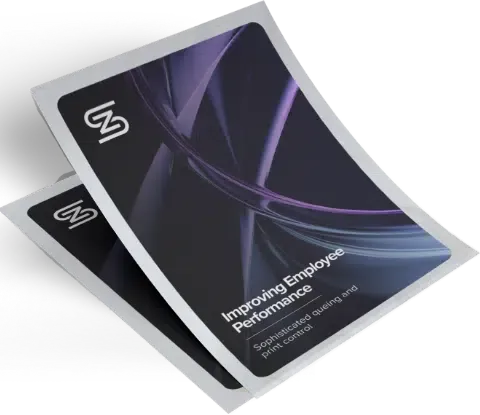Almost 20 years ago the early web-to-print (aka Web2Print or W2P) solutions began a printing industry revolution. This innovation allowed customers to upload their files via editors and web portals, significantly streamlining the transition of work from client to print facility. However, while web-to-print was once a game-changer, enabling a level of order submission automation previously unseen, it’s now only a part solution to streamlining production and eliminating cost. In this week’s post I look at how comprehensive automation has become.
Web-to-Print: The Early Days of Automation
Web-to-print emerged as a response to the cumbersome and manual processes of file submission and job initiation. Before its introduction, jobs would be physically handed off or emailed to sales representatives, who then coordinated with pre-press teams to prepare the work for production. Web-to-print simplified this by transferring the onus of file preparation partially onto the customer, reducing the need for intermediary steps and personnel.
Despite its groundbreaking nature, web-to-print addressed only the initial phase of the printing workflow—ordering automation. It did little to eliminate the need for estimation, job governance, and the myriad manual steps involved in pre-press and post-press processes. Consequently, while it represented a significant leap forward, it stopped short of delivering a truly automated workflow.
Beyond Web-to-Print: The Push for Comprehensive Automation
As the industry evolved, the focus has shifted towards achieving a more holistic form of automation, encompassing not just order submission but the entire production lifecycle. The goal has been to create a “conveyor belt” system where jobs move seamlessly from inception to delivery with minimal manual intervention. This vision encompasses ordering, pre-press preparation, printing, finishing, and shipping—all integrated into a single, fluid process.
The logic for this direction is based on where cost sits in a digital manufacturing business. The vast majority of cost sits downstream of file automation – that’s where almost all staffing, factory space, equipment and of course shipping is located.
At the end of the day it makes sense to automate where your cost is incurred.
ZenSmart: Bridging the Automation Gap
That’s where ZenSmart fits in.
In designing and building ZenSmart we created that next generation of printing industry automation, providing an end-to-end solution that extended beyond the boundaries of traditional web-to-print systems. By managing the entire workflow from file receipt to product shipment, ZenSmart eliminates the gaps between the various phases of production that can lead to inefficiencies and errors, and strips cost from these stages.
Unlike solutions that focus on isolated segments of the production process, ZenSmart ensures that the various “conveyors” within the printing workflow are perfectly synchronized, preventing jobs from falling through the cracks. It not only automates the process but also provides comprehensive tracking and reporting capabilities, enabling continuous refinement and optimization of operations.
While web-to-print remains a vital component of the printing industry, offering an effective way to initiate the printing process, it is no longer sufficient on its own to meet the demands of modern agile, least cost production. True efficiency and automation require a solution that extends far beyond the initial order submission, integrating seamlessly across all stages of production.
Wrapping up
As printing industry competition continues to intensify and costs soar, the push for greater automation and efficiency becomes increasingly critical. Web-to-print laid the groundwork, but the future lies in comprehensive solutions like ZenSmart that offer a holistic approach to workflow automation. By embracing these advanced systems, print facilities can achieve the “conveyor belt” efficiency that is essential for cost reduction and competitiveness in today’s market.For those looking to explore how ZenSmart can transform your printing operations into a model of modern efficiency, visit the ZenSmart Website for more insights and personalized advice.




